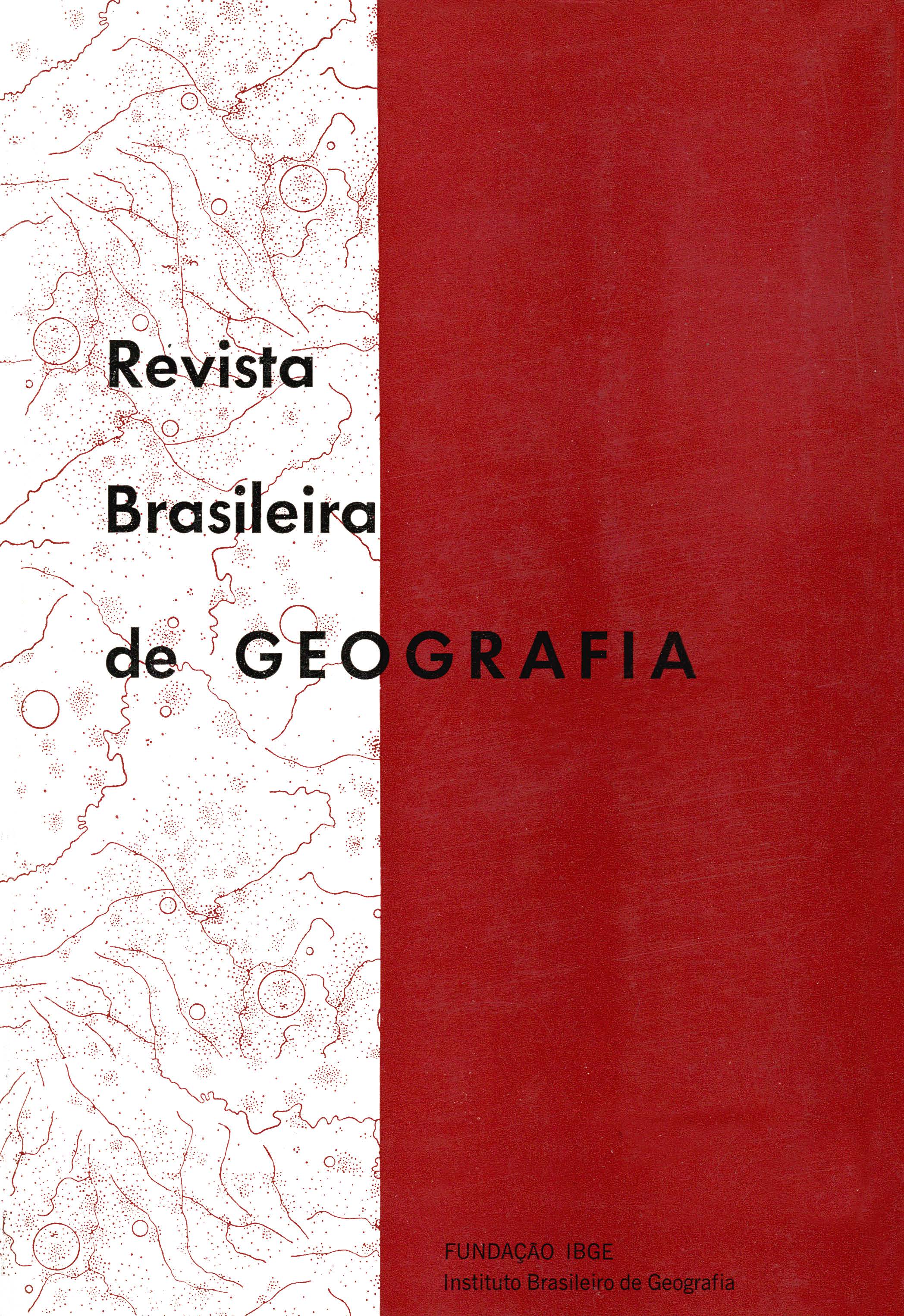Padrões de ligações e sistema urbano : uma análise aplicada aos Estados da Guanabara e Rio de Janeiro
Palavras-chave:
Rio de Janeiro - RJ, Rio de Janeiro - Estado, Renovação urbana, Geografia urbanaResumo
Considering the existence of urban systems as a group of cities with differentiation, under the functional point of view, and respective connections, some questions can be expressed for a better knowledge of the cities nature, the connections among them and the reciprocal effects among cities and connections. We can include certainly, among so many questions one about the pattern of connections among cities of a same urban system. In order to answer this questions it was proposed a simple model, which describes the relations patterns. This model has its origin in concepts of Christaller, Jefferson, Taaffe, Morrill and Gould, Ekstrom and Williason, and Bogue.
The proposed model, identified as Pattern B, shows an enlargement of the connections among the Interior cities, in spite of the metropolitan predominance; the regional capitals of the most important cities of interior maintain a proper system of connections with 1ts influence area.
The assumed hypothesis in this study is that the specific pattern of connection in the urban system Guanabara-Rio de Janeiro fits well in the Pattern B, in an evolution stage allowed by the development of the interrelations among the interior centers, even admitting the predominance exerted by the metropolitan area of Rio de Janeiro over the whole State.
The connections among the system cities consist under the mentioned model the crucial aspect to testify the formulated hypothesis. By this way the empirical material should be related to the interurban connections. There are several connections maintained by pair-of-cities: industrial inputs, industrialized products and general services, among others. From these connections only those related to the retailer distribution and to the services have the characteristic to make part of a system of cities, because it is through a distribution that all parts of a system are connected. Thus, the hypothesis should be testified through those type of interactions. Having in mind that these interactions were realized through the inter-municipal bus connections, this type of information was chose and it is considered the empirical material of the present study.
The connections among the urban centers were defined by the existence or not of bus lines among pairs of the system places, during the year of 1971.
The analysis of the urban system Guanabara-Rio de Janeiro, due to the formulated hypothesis, has been based on the transformation of the bus connections system into a graph and this into a connection matrix, indicating the direct connections among pairs of the system places. From this matrix, the indirect connections were identified through the potentiality and weighting of the initial matrix. However, in view of the strong metropolitan predominance, the characterization of subsystems became not a reality, and the empirical evidences and results of anterior researches have proved the presence of the subsystems guided by the interior cities. Thus, using the same systematic it was possible to utilize the technique o! Reed, in the analysis of the Indian urban system.
Beginning by the connection matrix it was organized a matrix of shortest way, and it was verified the necessary steps to connect each pair of places not connected directly. Deduced the shortest way matrix, the total sum of each line or column gave the index of accessibility and corresponding value of the GAD - graph average distance. The next stage of the study is interrelated with each removed vertix of the system and the verification of the value of average change related with the removal.
In virtue of the need of simplification of the account and the objective of the study, it has been stated, to remove all the component vertixes of the metropolitan area of Rio de Janeiro, as well as their connections with the system.
With the removal of the metropolitan area it was fixed a graph subdivided into two parts: subsystem East and subsystem West. From these two system, it was prepared, for each one, a connection matrix and a shortest way matrix, the former defined the accessibility index and the GAD. It was removed, successively, each vertix of the subsystems, originating values related to the average change of each nodule, which make possible the hierarchy of the cities, in successive levels. The first one should characterize the metropolitan area of Rio de Janeiro.
First level - Metropolitan area
1st - level - Metropolitan area
2nd - level - Nova Friburgo, Campos and Barra do Piraí
3rd - level - Barra Mansa, Valença, Itaperuna, Macaé and Cabo Frio
4th - level - It is constituted by sub conjoint of double and triple
Rio das Flores - Paraíba do ;Sul - Três Rios; Sapucaia - Teresópolis -
Sumidouro; Rio Bonito - Saquarema - Silva Jardim; Duas Barras - Cantagalo
- Cordeiro; Angra dos Reis - Parati; Vassouras - Miguel Pereira;
São Fidelis - Cabuci; Miracema - Santo Antonio de Pádua.
5th - level - Separated cities






